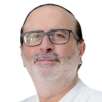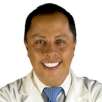MEMPHIS & COLOMBIA, Tenn., USA: Human trials on a revolutionary method to prepare dental cavities are expected to begin soon in the U.S.. In cooperation with Nanova Inc, a Columbia-based start-up, a research team from the University of Tennessee-Memphis will test a device that is said to improve longevity of fillings through treatment with streams of low-temperature ionised gas.
The so-called “plasma brush” received first recognition in 2009 when the Small Business Innovation Research (SBIR) programme of the U.S. government awarded US$157,000 to Nanova for the development of the device. According to company representative Meng Chen, first lab test with the method have recently turned out successful without producing any side effects.
The technology uses characteristics of non-thermal plasma, also known as "cold plasma" owing to its low temperature, that has been already applied by other industrial sectors like the food industry to sanitise fragile surfaces like those of fruit permanently. Similar to that the MU research team found that it also helped to disinfect oral cavities by producing oxygen-free radicals that are able to destroy biological microorganisms like bacteria by disrupting their cellular membranes.
Earlier research conducted by researchers from the University of Southern California in Los Angeles produced similar results on biofilms cultivated in root canals of extracted human teeth.
Despite its antimicrobial potential, the MU research team also found that cold plasma was able to enhance the bonding between the natural tooth surface and different filling materials by changing the surface of dentine through a chemical reaction.
“Our studies indicate that fillings are 60 per cent stronger with the plasma brush, which would increase the filling's lifespan, “Hao Li, a professor of the University of Missouri College of Engineering said.
Chen said that if the trials produce clinical data that confirm the initial findings, the device could be available to dentists by end of next year depending on approval by the US Food and Drug Administration.
NEW YORK, N.Y., USA: Having “ugly” teeth may be a significant cause of bullying, according to a new study just published in the American Journal...
CLEVELAND, Ohio, USA: A discovery by researchers at Case Western Reserve University (CWRU) in Cleveland could help to explain the origins of foodborne ...
Big data use in dental research is proving quite useful in identifying potential confounding variables and health factors that could affect treatment ...
When it comes to treatment acceptance — or lack thereof — it seems as though a lot of time and energy are wasted on that familiar trio ...
CHICAGO, Ill., USA: According to Dr. Michael J. Lewis, a root canal specialist, chronic sinus infections are sometimes caused by an underlying tooth ...
KRIENS, Switzerland: According to World Health Organization data, almost 45% of the global population has some form of oral disease. For people with a ...
NEW YORK/LONDON: Botox is a protein derived from botulism toxin that is injected underneath the skin in order to minimize or smooth out lines and wrinkles ...
OAK BROOK, IL / NEW YORK, NY, USA: If current trends continue, getting an appointment with a dentist might become more challenging in coming years. A survey...
CHICAGO, Ill., USA: Screenings by dentists for the most common chronic medical diseases could save the American health care system as much as $102.6 million...
In the early nineties, Cool Jaw partnered with leading oral and maxillofacial surgeons to develop a new generation of hot and cold therapy. Specifically ...
Live webinar
Thu. 18 April 2024
11:00 AM EST (New York)
Live webinar
Mon. 22 April 2024
10:00 AM EST (New York)
Prof. Dr. Erdem Kilic, Prof. Dr. Kerem Kilic
Live webinar
Tue. 23 April 2024
1:00 PM EST (New York)
Live webinar
Wed. 24 April 2024
8:00 AM EST (New York)
Dr. Yin Ci Lee BDS (PIDC), MFDS RCS, DClinDent Prosthodontics, Dr. Ghida Lawand BDS, MSc, Dr. Oon Take Yeoh, Dr. Edward Chaoho Chien DDS, DScD
Live webinar
Wed. 24 April 2024
1:00 PM EST (New York)
Live webinar
Thu. 25 April 2024
12:00 PM EST (New York)
Dra. Deborah Martinez LaForest, Dra. Macjorette Larez, Dr. Francisco Castellanos Medina, Dr. Francisco Eraso
Live webinar
Fri. 26 April 2024
12:00 PM EST (New York)



 Austria / Österreich
Austria / Österreich
 Bosnia and Herzegovina / Босна и Херцеговина
Bosnia and Herzegovina / Босна и Херцеговина
 Bulgaria / България
Bulgaria / България
 Croatia / Hrvatska
Croatia / Hrvatska
 Czech Republic & Slovakia / Česká republika & Slovensko
Czech Republic & Slovakia / Česká republika & Slovensko
 Finland / Suomi
Finland / Suomi
 France / France
France / France
 Germany / Deutschland
Germany / Deutschland
 Greece / ΕΛΛΑΔΑ
Greece / ΕΛΛΑΔΑ
 Italy / Italia
Italy / Italia
 Netherlands / Nederland
Netherlands / Nederland
 Nordic / Nordic
Nordic / Nordic
 Poland / Polska
Poland / Polska
 Portugal / Portugal
Portugal / Portugal
 Romania & Moldova / România & Moldova
Romania & Moldova / România & Moldova
 Slovenia / Slovenija
Slovenia / Slovenija
 Serbia & Montenegro / Србија и Црна Гора
Serbia & Montenegro / Србија и Црна Гора
 Spain / España
Spain / España
 Switzerland / Schweiz
Switzerland / Schweiz
 Turkey / Türkiye
Turkey / Türkiye
 UK & Ireland / UK & Ireland
UK & Ireland / UK & Ireland
 International / International
International / International
 Brazil / Brasil
Brazil / Brasil
 Canada / Canada
Canada / Canada
 Latin America / Latinoamérica
Latin America / Latinoamérica
 China / 中国
China / 中国
 India / भारत गणराज्य
India / भारत गणराज्य
 Japan / 日本
Japan / 日本
 Pakistan / Pākistān
Pakistan / Pākistān
 Vietnam / Việt Nam
Vietnam / Việt Nam
 ASEAN / ASEAN
ASEAN / ASEAN
 Israel / מְדִינַת יִשְׂרָאֵל
Israel / מְדִינַת יִשְׂרָאֵל
 Algeria, Morocco & Tunisia / الجزائر والمغرب وتونس
Algeria, Morocco & Tunisia / الجزائر والمغرب وتونس
 Middle East / Middle East
Middle East / Middle East
:sharpen(level=0):output(format=jpeg)/up/dt/2024/04/Study-points-to-lack-of-formal-education-on-cannabis-in-dentistry.jpg)
:sharpen(level=0):output(format=jpeg)/up/dt/2024/04/Immediate-full-arch-zirconia-implant-therapy-utilising-the-power-of-robotic-assistance-and-digital-scanning_Fig-1-preophoto_title.jpg)
:sharpen(level=0):output(format=jpeg)/up/dt/2024/04/Lowcost-tooth-sensitivity-liquid-found-to-combat-caries-1.jpg)
:sharpen(level=0):output(format=jpeg)/up/dt/2024/04/DS-Academy-launches-Indirect-Restorative-Course-Series.jpg)
:sharpen(level=0):output(format=jpeg)/up/dt/2024/03/The-fight-continues-for-anaesthesia-safety-in-dentistry.jpg)











:sharpen(level=0):output(format=png)/up/dt/2014/02/A-dec.png)
:sharpen(level=0):output(format=png)/up/dt/2023/11/Patent%E2%84%A2-Implants-_-Zircon-Medical.png)
:sharpen(level=0):output(format=png)/up/dt/2010/11/Nobel-Biocare-Logo-2019.png)
:sharpen(level=0):output(format=png)/up/dt/2011/11/ITI-LOGO.png)
:sharpen(level=0):output(format=png)/up/dt/2014/02/MIS.png)
:sharpen(level=0):output(format=png)/up/dt/2022/01/Sprintray_Logo_2506x700.png)
:sharpen(level=0):output(format=jpeg)/up/dt/e-papers/330729/1.jpg)
:sharpen(level=0):output(format=jpeg)/up/dt/e-papers/330727/1.jpg)
:sharpen(level=0):output(format=jpeg)/up/dt/e-papers/330725/1.jpg)
:sharpen(level=0):output(format=jpeg)/up/dt/e-papers/325039/1.jpg)
:sharpen(level=0):output(format=jpeg)/up/dt/e-papers/325007/1.jpg)
:sharpen(level=0):output(format=jpeg)/up/dt/e-papers/313543/1.jpg)
:sharpen(level=0):output(format=jpeg)/up/dt/2017/01/5fc1fb887d2920c943a4c420dd620864.jpg)

:sharpen(level=0):output(format=jpeg)/up/dt/2024/04/Study-points-to-lack-of-formal-education-on-cannabis-in-dentistry.jpg)
:sharpen(level=0):output(format=gif)/wp-content/themes/dt/images/dt-user.gif)
:sharpen(level=0):output(format=jpeg)/up/dt/2017/01/b14bf4623baf29c8b3ce0e1b20b31657.jpg)
:sharpen(level=0):output(format=jpeg)/up/dt/2011/12/fe64cb4e4c64d1cb8204ca193d04039e.jpg)
:sharpen(level=0):output(format=jpeg)/up/dt/2023/11/Big-data-could-mean-better-outcomes-for-implantology.jpg)
:sharpen(level=0):output(format=jpeg)/up/dt/2009/07/fff6436a23618825c55b812a990d89e2.jpg)
:sharpen(level=0):output(format=jpeg)/up/dt/2019/02/head-shot2-current_00.jpg)
:sharpen(level=0):output(format=jpeg)/up/dt/2024/02/At-last-A-fully-robotic-toothbrush-for-disabled-patients.jpg)
:sharpen(level=0):output(format=jpeg)/up/dt/2011/03/df7557c653411ecce2253075514afe96.jpg)
:sharpen(level=0):output(format=jpeg)/up/dt/2010/05/fe3ca9072a6ea038bbf805b9c44578d3.jpg)
:sharpen(level=0):output(format=jpeg)/up/dt/2017/01/ad1413c73f09945d5d000d2ddc8773e2.jpg)
:sharpen(level=0):output(format=jpeg)/up/dt/2023/02/coolgel2.jpg)







:sharpen(level=0):output(format=jpeg)/up/dt/2024/04/Study-points-to-lack-of-formal-education-on-cannabis-in-dentistry.jpg)
:sharpen(level=0):output(format=jpeg)/up/dt/2024/04/Immediate-full-arch-zirconia-implant-therapy-utilising-the-power-of-robotic-assistance-and-digital-scanning_Fig-1-preophoto_title.jpg)
:sharpen(level=0):output(format=jpeg)/up/dt/2024/04/Lowcost-tooth-sensitivity-liquid-found-to-combat-caries-1.jpg)
:sharpen(level=0):output(format=jpeg)/up/dt/e-papers/330727/1.jpg)
:sharpen(level=0):output(format=jpeg)/up/dt/e-papers/330725/1.jpg)
:sharpen(level=0):output(format=jpeg)/up/dt/e-papers/325039/1.jpg)
:sharpen(level=0):output(format=jpeg)/up/dt/e-papers/325007/1.jpg)
:sharpen(level=0):output(format=jpeg)/up/dt/e-papers/313543/1.jpg)
:sharpen(level=0):output(format=jpeg)/up/dt/e-papers/330729/1.jpg)
:sharpen(level=0):output(format=jpeg)/up/dt/e-papers/330729/2.jpg)
:sharpen(level=0):output(format=jpeg)/wp-content/themes/dt/images/3dprinting-banner.jpg)
:sharpen(level=0):output(format=jpeg)/wp-content/themes/dt/images/aligners-banner.jpg)
:sharpen(level=0):output(format=jpeg)/wp-content/themes/dt/images/covid-banner.jpg)
:sharpen(level=0):output(format=jpeg)/wp-content/themes/dt/images/roots-banner-2024.jpg)
To post a reply please login or register